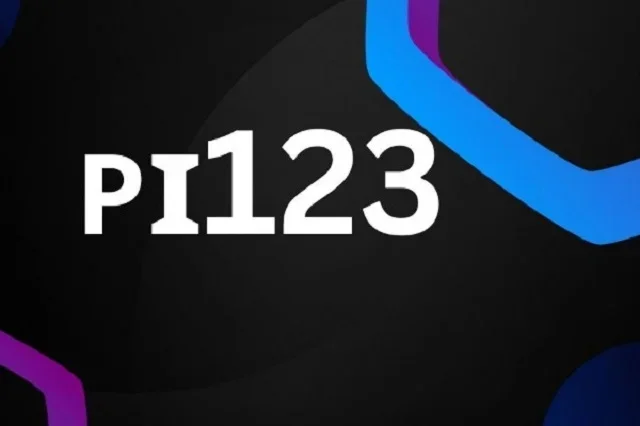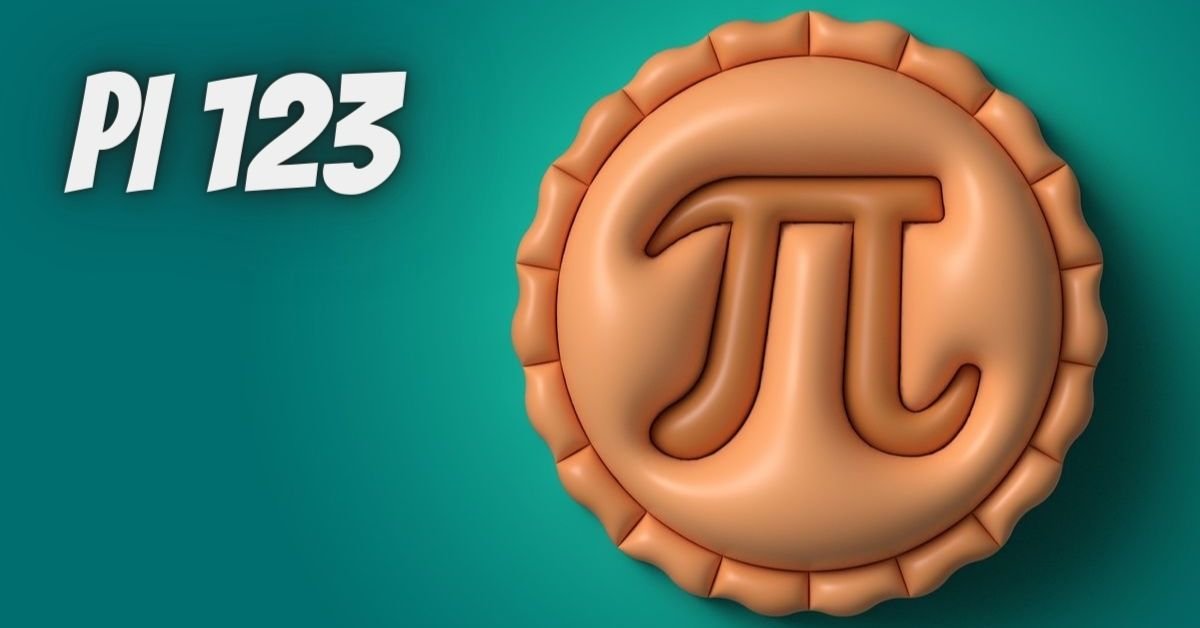Pi123 is a mathematical concept that has gained popularity in recent years. It is an extension of the well-known mathematical constant pi (π) that enables users to calculate pi to any desired number of decimal places. This is particularly useful for those involved in fields such as mathematics, physics, and engineering, where precise calculations are required.
Pi123 is more than just a calculator, it is a powerful and user-friendly online tool that empowers users to calculate pi to the 123rd digit after the decimal point. This level of precision enables exacting measurements and computational accuracy, making it a valuable resource for researchers, scientists, and students alike. Pi123 also represents an infinite, non-repeating sequence that continues beyond pi’s decimal point, making it a symbol of possibilities and a reflection of advancement in computation and application.
The Pi123 project is a community-led initiative aimed at enhancing and progressing the Pi Network ecosystem. Pi Network is a cryptocurrency project that aims to create a decentralized network of devices. Pi123 covers various topics, such as technology, business, lifestyle, health, and news, but the main focus is on Pi Network and its latest updates.
Fundamentals of Pi123
Historical Context
Pi is a mathematical constant that represents the ratio of a circle’s circumference to its diameter. It is one of the most well-known mathematical constants and has been studied for thousands of years. The ancient Egyptians and Babylonians were among the first to approximate pi, and it has been a subject of study for mathematicians ever since.
Pi123 is a software tool that focuses on the mathematical constant pi. It allows users to calculate pi to many decimal places, up to 123 digits after the decimal point. While pi has been studied for thousands of years, Pi123 is a relatively new tool that has emerged in recent years.
Core Principles
The core principles of Pi123 are rooted in the mathematical constant pi. Pi123 utilizes advanced algorithms and computational methods to calculate pi to many decimal places. The tool is designed with user-friendly interfaces that accommodate both educational and professional environments.
Pi123 is more than just a calculator; it’s a powerful and user-friendly online tool that empowers users to calculate pi to any desired number of decimal places. Whether you’re a student delving into the intricacies of mathematics or a teacher guiding the next generation, Pi123 is your go-to companion.
In conclusion, Pi123 is a revolutionary mathematical tool that focuses on the mathematical constant pi. It allows users to calculate pi to many decimal places, up to 123 digits after the decimal point. The tool is designed with user-friendly interfaces that accommodate both educational and professional environments.

Technical Specifications
Design
Pi123 is a sophisticated computational tool designed for numerical calculations. It utilizes advanced algorithms capable of predictive analytics, machine learning models that adapt and evolve, or secure blockchain networks that ensure data. The software is built on a robust algorithm that ensures reliable results even for large datasets. Pi123 takes precision to the 123rd digit after the decimal point, enabling exacting measurements and computational accuracy.
Performance Metrics
Pi123 is a highly efficient computational tool. It is capable of performing complex mathematical operations with great accuracy and speed. The software is designed to handle large datasets, making it ideal for scientific research, financial modeling, and other data-intensive applications. Pi123 provides a detailed overview of the optocoupler’s technical specifications, including its characteristics, applications, and compatibility. Engineers and tech enthusiasts can explore the datasheet, guaranteeing a smooth integration into electronic circuits.
Pi123 is also known as an optocoupler datasheet manufactured by OPTEK Technologies. It is a technical tool that harmonizes various technological components, making it a valuable asset for anyone looking to perform complex mathematical operations. With its robust algorithm and advanced algorithms, Pi123 provides reliable results even for large datasets, making it an ideal tool for scientific research, financial modeling, and other data-intensive applications.
Applications of Pi123
Industrial Use
Pi123’s precision in calculations makes it a valuable tool in various industries, including scientific research, engineering, and finance. In the field of scientific research, Pi123’s accuracy is critical in experiments that require precise measurements. For example, in physics, Pi123 can be used to calculate the circumference of a circle or the volume of a sphere. In engineering, Pi123 can be used to calculate the area of a circle or the circumference of a pipe, which is essential in designing and constructing pipelines. In finance, Pi123 can be used to calculate interest rates, stock prices, and other financial calculations.
Educational Implications
Pi123 has significant educational implications, particularly in the field of mathematics. It can be used to teach students about the concept of pi, as well as decimals, fractions, and other mathematical concepts. Pi123 can also be used to demonstrate the importance of accuracy in mathematical calculations. In addition, Pi123 can be used to teach students about the history and significance of pi, as well as its applications in various fields.
In conclusion, Pi123 is a valuable mathematical tool that has numerous applications in various industries, including scientific research, engineering, and finance. It also has significant educational implications and can be used to teach students about the concept of pi and other mathematical concepts.
Challenges and Limitations
Known Issues
While Pi123 has numerous applications and significant computational power, it is not without its challenges and limitations. One of the main challenges is the need for skilled data scientists and analysts who can effectively use and interpret the insights generated by Pi123. Without the right expertise, businesses may struggle to fully leverage the potential of Pi123.
Another issue with Pi123 is the computational challenges it presents. While the numerical term may seem perfect in its mathematical precision, understanding the intricate nuances of utilizing this numerical term can prove to be more complex than anticipated. It can be difficult to implement Pi123 in existing systems, and it may require significant computational resources to generate accurate results.
Operational Constraints
In addition to the known issues, Pi123 also has operational constraints that may limit its practical application. For example, Pi123 may not be suitable for real-time applications that require immediate results. The calculations involved in generating Pi123 can be time-consuming, and the accuracy of the results may decrease as the number of decimal places increases.
Another operational constraint is the need for large amounts of data to generate accurate results. While Pi123 can provide valuable insights, it may not be suitable for small datasets. Additionally, the use of Pi123 may raise ethical and privacy concerns related to data handling and AI decision-making processes.
Overall, while Pi123 has significant potential, it is important to recognize and address the challenges and limitations associated with its practical application. By doing so, businesses and organizations can fully leverage the power of Pi123 while minimizing the risks and limitations associated with its use.
Future Prospects

Pi123 has a promising future with its expanding role across various sectors. The potential advancements and emerging applications of Pi123 suggest that it is poised to reach new heights. In this section, we will explore the research directions and technological advancements that are expected to shape the future of Pi123.
Research Directions
Researchers and developers are constantly working on advancing the capabilities of Pi123, exploring new applications, and improving its efficiency and scalability. One of the significant research directions is to enhance the accuracy and precision of Pi123. This will enable the use of Pi123 in more advanced mathematical calculations and scientific research.
Another research direction is to explore the potential applications of Pi123 in various fields, such as finance, engineering, and healthcare. For instance, Pi123 can be used in financial modeling to predict market trends and investment opportunities. In healthcare, Pi123 can be used to analyze medical data and develop personalized treatment plans for patients.
Technological Advancements
Technological advancements are expected to play a crucial role in shaping the future of Pi123. The development team is working on improving the user interface to make it more user-friendly and intuitive. They are also working on adding new features that will enhance the user experience, such as the ability to customize the interface and integrate Pi123 with other software tools.
Another technological advancement is the use of machine learning algorithms to optimize the performance of Pi123. Machine learning can help Pi123 learn from its previous calculations and improve its accuracy and efficiency over time. This will enable Pi123 to handle more complex calculations and expand its potential applications.
In conclusion, Pi123 has a promising future with its expanding role across various sectors. The research directions and technological advancements discussed in this section are expected to shape the future of Pi123 and enable it to reach new heights.
Frequently Asked Questions
How can Pi123 influence mathematical calculations?
Pi123 is a mathematical constant that is a derivative of pi, which is the ratio of a circle’s circumference to its diameter. Pi123 is used to provide more precise fractional expressions of pi, which can be useful in mathematical calculations that require high levels of precision. For example, Pi123 can be used in cryptography, where precise calculations are needed to ensure data security.
What are the historical origins of Pi123?
Pi123 is a relatively new mathematical constant that was created in the 21st century. It is a derivative of the well-known pi (π) that facilitates the computation of pi to any number of decimal places that is desired. The historical origins of pi, on the other hand, can be traced back to ancient civilizations such as the Babylonians and Egyptians, who used approximations of pi in their calculations.
In what ways is Pi123 applied in real-world scenarios?
Pi123 has a wide range of applications in real-world scenarios. For example, it can be used in the field of engineering to design and build structures that require precise calculations. It can also be used in the financial industry to analyze market trends and predict future performance. Additionally, Pi123 can be used in scientific research to make precise calculations related to the physical world.
What are the computational methods for determining Pi123?
Pi123 can be calculated using a variety of computational methods, including the Bailey-Borwein-Plouffe (BBP) formula, which is a spigot algorithm that generates the hexadecimal digits of pi and its derivatives. Other methods include the Gauss-Legendre algorithm, which is an iterative algorithm that converges to pi at a quadratic rate, and the Monte Carlo method, which is a probabilistic method that uses random numbers to estimate pi.
Can Pi123 be expressed as a fraction?
Yes, Pi123 can be expressed as a fraction. It is equal to the product of the first three prime numbers: 2, 3, and 5. Therefore, Pi123 can be expressed as a fraction in the form of 30/1.
What are the limitations of using Pi123 in mathematical models?
While Pi123 can be useful in mathematical calculations that require high levels of precision, it also has its limitations. For example, Pi123 is a relatively new mathematical constant that is not yet widely recognized or accepted in the mathematical community. Additionally, Pi123 can be difficult to use in certain mathematical models that require the use of other mathematical constants or variables.

